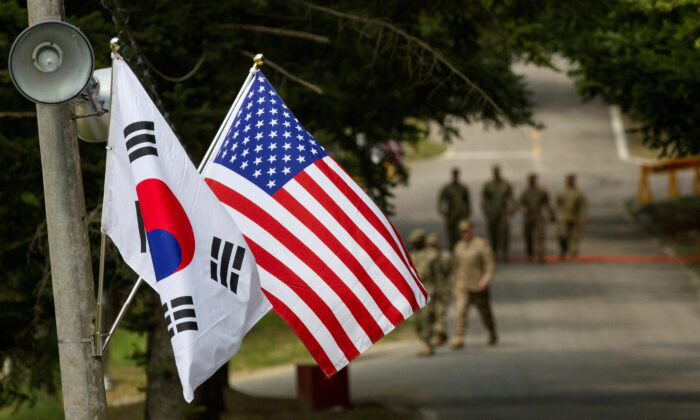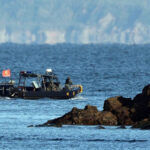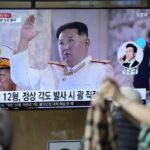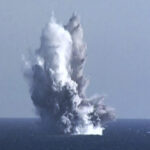By Aldgra Fredly
A U.S. nuclear-powered submarine docked in the South Korean port city of Busan on Saturday after North Korea conducted a “strategic” cruise missile drill last week.
The U.S. Navy Korea announced in a Facebook post on Feb. 25 that the USS Springfield arrived in Busan for a scheduled port visit but did not elaborate on the duration of its stay.
The USS Springfield is one of five Los Angeles-class fast-attack submarines based in Guam. The vessel and its crew routinely conduct maritime security operations in support of national security interests.
The submarine’s deployment to South Korea comes after North Korea test-fired four cruise missiles on Feb. 23, with the regime saying it was protesting the U.S.-South Korea tabletop exercise in Washington last week.
Shin Jong-woo, a senior researcher at the Korea Defense and Security Forum, said that Springfield’s arrival in Busan demonstrates the United States’ deterrence commitment to its ally South Korea against the North Korean regime’s threats.
“A nuclear-powered submarine is a weapon system that can covertly approach and subdue any North Korean submarine, so I think it can be another level of warning to North Korea,” Shin told The Korea Times.
The United States had pledged to maintain close cooperation with South Korea and continue a range of efforts to enhance extended deterrence efforts in response to North Korea’s ongoing missile tests and nuclear arms development in violation of multiple U.N. Security Council resolutions.
The two allies issued a joint press release after their tabletop exercise on Feb. 22, affirming U.S. commitment to working with South Korea using “an effective mix of capabilities, concepts, deployments, exercises, and tailored options” to deter North Korea’s aggression.
“The United States will continue to field flexible nuclear forces suited to deterring regional nuclear conflict, including the capability to forward deploy strategic bombers, dual-capable fighter aircraft, and nuclear weapons to the region,” the statement reads.
According to the Pentagon, the United States had stated in its 2022 Nuclear Posture Review that any nuclear attack by North Korea against it and its allies is unacceptable and “will result in the end of that regime.”
North Korea’s Retaliatory Move
North Korea also launched an intercontinental ballistic missile (ICBM) on Feb. 18 in what it called “a surprise launching drill,” which landed outside Japan’s exclusive economic zone.
Japan said the ICBM had the capacity to strike the United States with a missile range of 8,700 miles.
The U.S. then staged joint air drills with South Korea and Japan on Feb. 19, to which North Korea responded by firing two “tactical nuclear” missiles into the sea.
North Korea condemns U.S.-South Korea joint drills as “rehearsals for an invasion” for regime change and vowed to retaliate against any military action under its principle of “nuke for nuke and an all-out confrontation for an all-out confrontation.”
It warned that the expansion of U.S.–South Korea joint drills and the U.S. promise to deploy more military assets to defend South Korea has thrown the Korean Peninsula “into the grave vortex of increasing tension.”
“If it is the U.S. option to show its muscle and counter everything with muscle, the same is true of the DPRK’s option,” the North’s Foreign Ministry spokesperson said, state media Korean Central News Agency reported on Feb. 16.
China, Russia Block Condemnation
The United States earlier called on the U.N. Security Council to condemn North Korea’s missile provocations and hold it to account for the destabilizing actions. But the effort was met with a veto by China and Russia—who are also members of the council.
U.S. ambassador to the United Nations Linda Thomas-Greenfield said the Security Council’s failures to respond enabled North Korea to conduct its destabilizing missile launches “without fear of consequences.”
“The reality is that those who shield the DPRK from the consequences of its escalatory missile tests put the Asian region, and entire world, at risk of conflict,” Thomas-Greenfield said at a council briefing in New York.
State Department spokesperson Ned Price said on Feb. 22 that North Korea’s nuclear development program will not benefit the Chinese Communist regime because it poses a threat to regional security, taking a different view to former Secretary of State Mike Pompeo.
“The DPRK’s ballistic missile program, its nuclear program, it is not only a threat to the United States and our people; it’s not only a threat to our treaty allies—Japan and the ROK in this case—but it is a threat to peace and security across the region, and that is not something that the PRC likes to see,” he said, referring to China’s official name, the People’s Republic of China.
North Korea launched more than 70 missiles last year, including potentially nuclear-capable weapons of various ranges, capable of targeting South Korea and the continental United States.
The United States has been urging for a return to a diplomatic approach to resolve the tensions, a call North Korea has ignored due to what it says are the United States and its allies’ “hostile policies” toward North Korea’s totalitarian regime.






